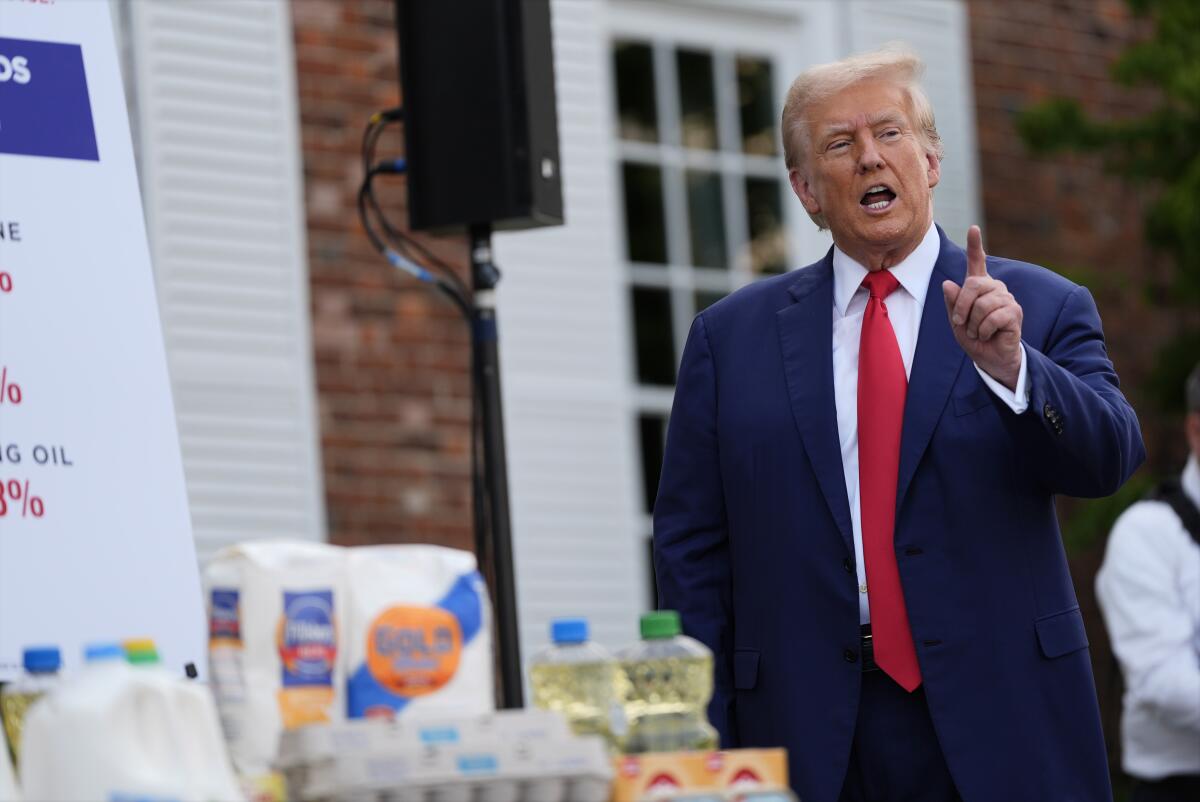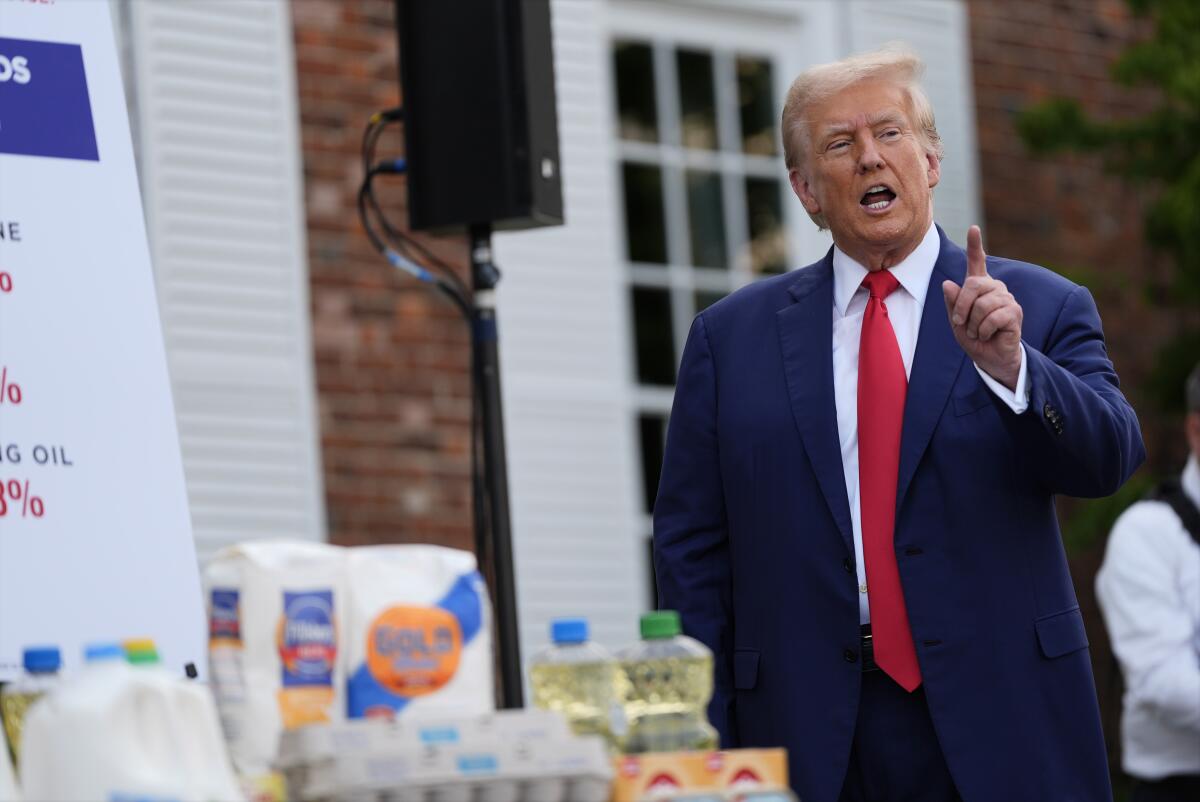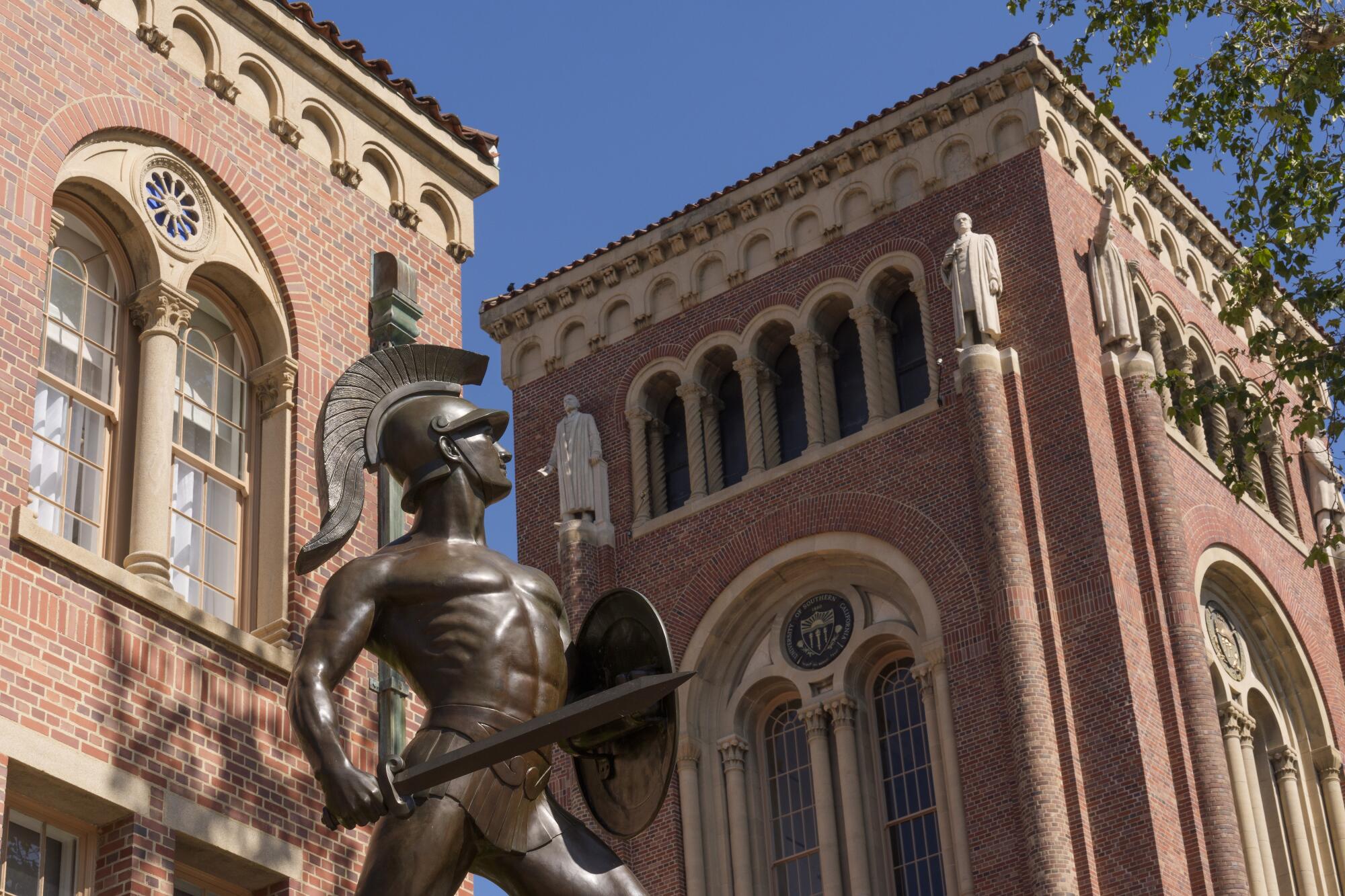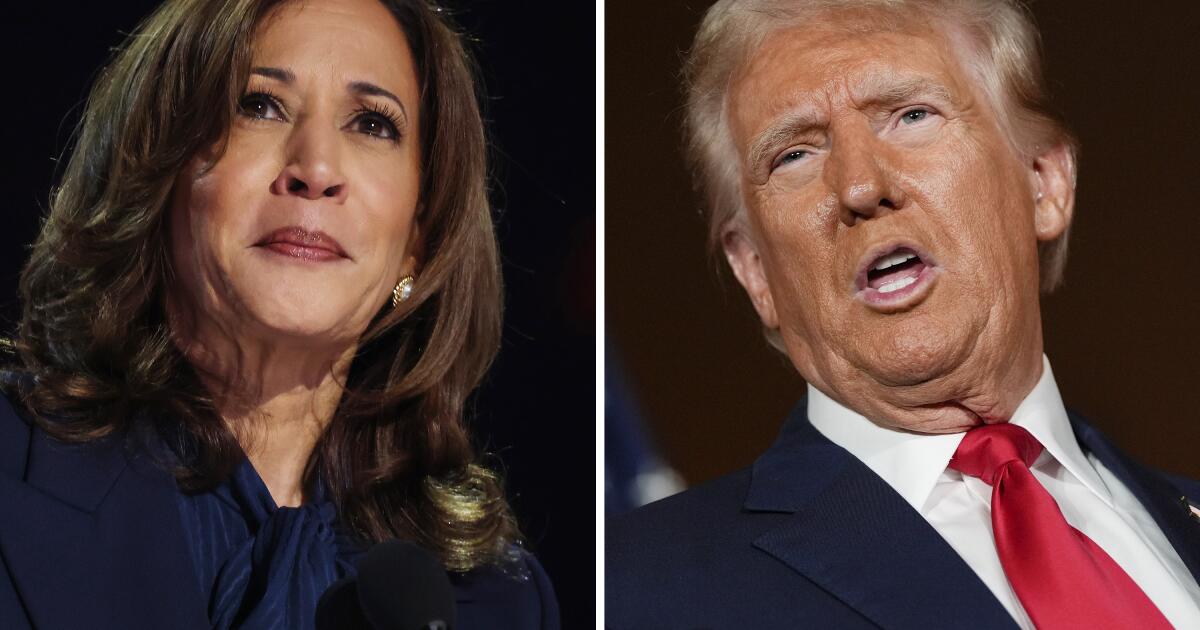WASHINGTON —
Vice President Kamala Harris enters this week’s Democratic National Convention in Chicago with a small lead over former President Trump in national polling averages that few would have thought likely even a month ago.
The truncated nature of the race — initially thought by many to present an added hurdle — has played to Harris’ strengths, while minimizing her flaws.
The Nov. 5 election will take place just 75 days after the convention ends on Thursday. Voting begins even earlier in many states, including prized battleground Pennsylvania, where some counties will begin handing out ballots next month.
Before President Biden dropped out of the race in July, many Democrats saw Harris as a risky candidate, while also worrying that anyone taking his place on the ballot would face logistical challenges.
Here’s why the snap election, unprecedented in modern American politics, has been helpful to Harris so far, and how Trump could reclaim a contest that is still up for grabs:
No primary, no problem with defining core beliefs
Harris started her race for her party’s 2020 nomination with the type of excitement she is drawing from Democratic voters today. More than 20,000 people showed up for her January 2019 announcement rally in Oakland, and she raised big dollars as she established herself as a top-tier contender.
By December of that year, before ballots were cast or caucuses held, she had dropped out. Harris had trouble defining her core beliefs compared with those of others in a big field of Democratic hopefuls. As a result, voters lacked a sense of what she stood for.
Was she a lefty competing for progressive populist votes with Sens. Bernie Sanders of Vermont and Elizabeth Warren of Massachusetts? Was she a centrist sparring with Biden and Pete Buttigieg, who is now Biden’s transportation secretary?
“She’s not necessarily easy to pigeonhole as being a progressive or centrist or moderate,” said Brian Brokaw, a former Harris advisor who ran a group supporting Harris in the primary. “She’s confounded people.”
Her attempts to straddle the party’s ideological divides — with her own universal healthcare plan and a partial embrace of the movement to reform or abolish the Immigration and Customs Enforcement agency — failed to win over her party.
She doesn’t have to worry about those fights now that the race is a binary choice — with brighter lines between her and Trump on issues such as abortion, democracy and the economy.
“She’s benefiting so much from being a foil against Trump, in a particularly compelling and positive way, that everyone’s looking at her differently,” said Faiz Shakir, a senior advisor to Sanders.
“In a primary process, voters would be asking, ‘Could she be the nominee? Should she be? Is she the best?’” Shakir added. “Here, you’re either for Trump or Harris.”
Less need for an ‘Etch-A-Sketch’
Mitt Romney’s 2012 presidential campaign was famously undermined when a top advisor said the Republican could erase some of the conservative positions he espoused in the GOP primary with an “Etch-A–Sketch” to appeal to a more moderate electorate in the general election.
Harris is doing a bit of that now, leaving behind her support four years ago for a universal health plan and a ban on fracking as she tries to win votes in Pennsylvania and other swing states. Republicans are trying to remind voters of her more liberal stances, but it’s harder than it would be if her shifts were more recent, and if Harris didn’t have her Biden administration record to run on.
She’s also facing less pressure from the left in her party than she would if she‘d competed in the primaries, when interest groups tend to use their leverage. She’s been leaning into her support for Biden’s bipartisan border enforcement deal, for example, avoiding some of the criticism from within the Democratic Party that Biden faced this year when he negotiated it with Senate Republicans. Trump pressured Republican lawmakers to kill the deal because he wants to keep the border as a political issue.
A turnkey operation
Harris inherited Biden’s entire campaign apparatus, avoiding the management clashes and staff turnover that hampered her 2020 campaign and early tenure as vice president.
The campaign was designed around Biden’s strengths and loyalties, which presented a challenge. But the tone has shifted quickly toward Harris’ style, which is more confrontational yet lighter as she tries to contrast her sense of joy with Trump’s grievances. The campaign was also built around a ground game, in anticipation of a tight race in which turning out core voters will be crucial.
Catching Trump off guard
Trump designed his campaign around Biden’s weaknesses, including his advanced age. Now Trump is the candidate facing some of the same questions.

Donald Trump’s campaign hadn’t planned to go up against Kamala Harris, but he still stands a chance.
(Julia Nikhinson / Associated Press)
Trump’s advisors believe Harris is a ripe target and have urged him to focus attacks on immigration and the economy — two areas where he holds polling advantages over her. But he has so far been unable to avoid distractions.
“I think I’m entitled to personal attacks” on Harris, Trump said Thursday at a news conference.
The calendar has kept the honeymoon going. Can it last?
Harris has lucked into great timing. She got a boost of excitement from relieved Democrats when Biden withdrew, and again with the announcement of Minnesota Gov. Tim Walz as her running mate, and is now entering a convention that will bring media focus including four nights of network airtime.
She’s been on the road almost the entire time, avoiding sit-down interviews and other unscripted encounters, which have given her trouble in the past.
Trump’s allies have been furious over what they see as an unfair glide path.
“The only thing that’s in Harris’ favor — the only thing — is the nonstop gusher of adoring coverage she’s getting from the media, who don’t seem inclined to wonder why she won’t answer a single question or explain the radical, leftist record she’s running from,” said Tim Murtaugh, Trump’s 2020 communications director, who recently joined his 2024 campaign. “She’s a weak vice president from a failed administration, but the media chooses to write about her ‘vibe’ instead.”
Trump’s 2020 campaign manager, Bill Stepien, said he was dubious that Harris’ momentum could continue, arguing that the dust had yet to settle following the Democratic campaign shake-up. Harris’ perceived advantages could backfire, he argued.
“She’s been offered a honeymoon period, which has certainly put some wind in her back,” Stepien said. “On the other hand, going through a primary process, running the gamut against a slate of opponents, tests you. It tests you on the debate stage. It tests you on the stump. It allows you to tweak and refine messaging.”
The pressure is still on
For all of Harris’ good fortune, polling shows that the race remains winnable for either candidate — tighter than it was eight years ago, when Trump defeated Hillary Clinton in the electoral college despite losing the popular vote. That gives Trump plenty of room to rebound and Harris time to stumble.
Her lack of sit-down interviews or full-scale news conferences since winning the nomination will increase the stakes when she does agree to one, or holds her first debate with Trump, on Sept. 10. She could also suffer from a twist in the news, such as a national economic setback or a shift in the war between Israel and Hamas.
“You have no room for error,” said Karen Finney, a Harris friend who served in a senior communications role for Clinton’s 2016 presidential campaign. “Everybody is always bringing your A-game to an election. This is your A-plus-plus game. There isn’t time.”
Finney argues that Harris has more than just luck and timing: She worked as vice president to build a message and a political coalition that would not have been there had another Democrat stepped in for Biden. But if she makes an error in a debate, she will have less time to rebound, Finney said.
“Joe Biden stepped down so we could have our best chance to beat Donald Trump,” she said. “Of course that creates pressure.”



